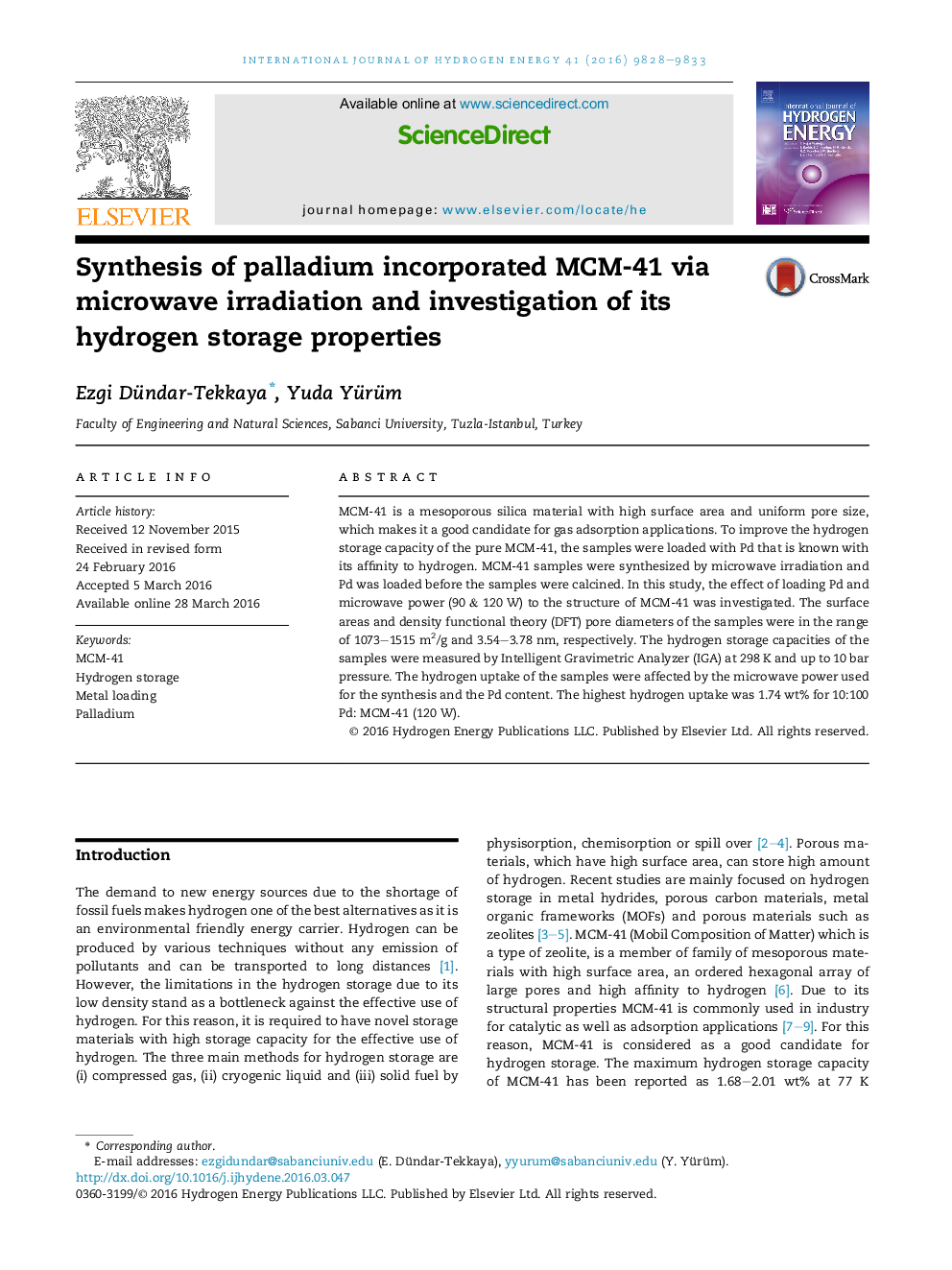| Article ID | Journal | Published Year | Pages | File Type |
|---|---|---|---|---|
| 1277033 | International Journal of Hydrogen Energy | 2016 | 6 Pages |
•Pd loaded mesoporous MCM-41 was successfully synthesized by microwave irradiation.•MCM-41 had good thermal stability, high surface area and uniform pore structure.•The hydrogen storage capacity of MCM-41 was strongly affected by the Pd content in the structure.•At 298 K and 10 bar the maximum hydrogen uptake was measured as 1.74 wt%.
MCM-41 is a mesoporous silica material with high surface area and uniform pore size, which makes it a good candidate for gas adsorption applications. To improve the hydrogen storage capacity of the pure MCM-41, the samples were loaded with Pd that is known with its affinity to hydrogen. MCM-41 samples were synthesized by microwave irradiation and Pd was loaded before the samples were calcined. In this study, the effect of loading Pd and microwave power (90 & 120 W) to the structure of MCM-41 was investigated. The surface areas and density functional theory (DFT) pore diameters of the samples were in the range of 1073–1515 m2/g and 3.54–3.78 nm, respectively. The hydrogen storage capacities of the samples were measured by Intelligent Gravimetric Analyzer (IGA) at 298 K and up to 10 bar pressure. The hydrogen uptake of the samples were affected by the microwave power used for the synthesis and the Pd content. The highest hydrogen uptake was 1.74 wt% for 10:100 Pd: MCM-41 (120 W).
